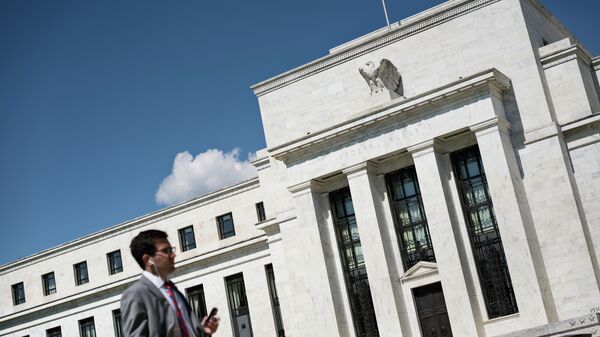Kristian Rouz — The US economy posted significant improvements during the outgoing year, returning to stable growth first time since the global crisis ended in 2009. Yet, most macro indicators are still below their ‘normal' levels of the pre-crisis year of 2006, moreover, the redistributive economic policies of the Obama administration might have allegedly slowed the process of the post-crisis recovery. Albeit the outlook into the coming year is rather encouraging, there are still several risks lingering in key areas of the US economy, including domestic consumption and investment, while the involvement of the federal government into the economy is increasing, stirring concerns of excessive dirigisme.
Although the US economy is currently improving at an accelerated pace, by many parameters it has not yet reached its pre-crisis 2006 levels, meaning the measures of economic policy practiced by the Obama administration during the past seven years have only been a partial success.
Consumer spending, the key driver to the US economy providing some 72% of domestic GDP growth, started a robust expansion in 2015, six years after the Great Recession. Even though the most recent spending and inflation figures are upbeat, the US domestic consumption is still below its pre-recession levels. US spending added 2.5% during the period between December 2014 and December 2015, the most solid improvement since the crisis. However, after-tax incomes grew an annualized 3.5%, meaning Americans have not rushed into the shops to spend their money. Meanwhile, the savings rate is just below its three-year highs at 5.5%
US business investment is slowing due to federal government's increased involvement in infrastructure and development projects. Consequently, business investment was diverted to financial market operations. Higher tax levels are still pushing US businesses overseas, even though multinationals' revenues loss stemming from a stronger dollar have recently curbed the offshoring urge somewhat.
According to the US Department of Commerce, the latest reading of the core measure of business investment was negative in November, at —0.4%, as orders for commercial jets slumped 22.2%. A broader measure of business investment dropped 1.8% from November 2014. Unless the situation improves this outgoing December, US business investment will have contracted a further consecutive quarter.
Meanwhile, the current US unemployment rate is just above what is was in 2006, largely due to massive increases in governmental spending at all levels. Labor participation levels are at their lowest since late 1970s, with many Americans refraining from seeking a job, while in absolute numbers there are 15.7 mln unemployed in the US. In late 2006, the number of jobless persons was 6.7 mln, according to the US Department of Labor's Bureau of Labor Statistics.
The US economy has expanded by a solid 2.2% compared to a year earlier amidst the accommodative borrowing costs levels, a recovery in the real estate market and automotive sales. However, the historical average pace of the US economic expansion is 3.3%, meaning the economy is still underperforming despite massive governmental intervention and the fact the Federal Reserve's rates had been near-zero for about seven years until this December.
Part of the reason for insufficient progress in economic recovery is the disorder left after the financial collapse of 2008, with many economic adjustment tools not working properly.
The connection between the banking sector and the real economy was almost completely lost by early 2009, and the Obama administration has largely failed in getting those mechanisms working again. Business investment is still going straight into the financial sector with profitable stock and bonds trading, while governmental spending throughout the first part of the 2010s has driven expansion in the real economy. Growth had been sluggish and negative at times until the shale oil boom came to save the day in 2014.
Now, as the effects of oil prosperity are waning amidst low crude prices, the US economy is starting to falter again, exposing the insolvency of the left-wing economic policies aimed at a greater governmental dirigisme.


